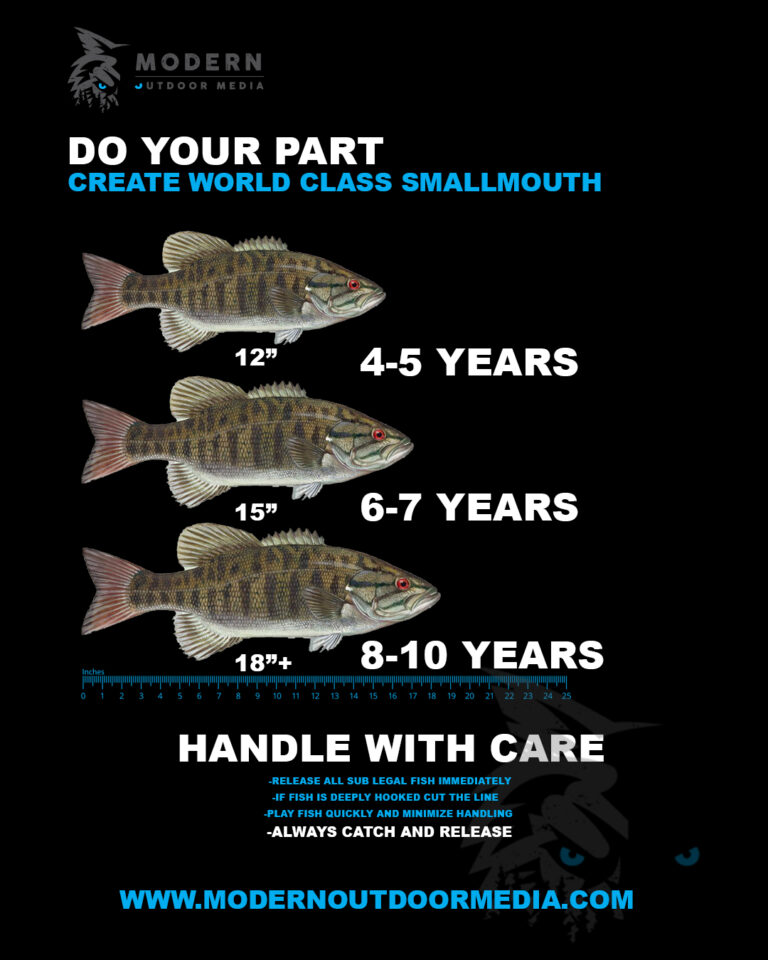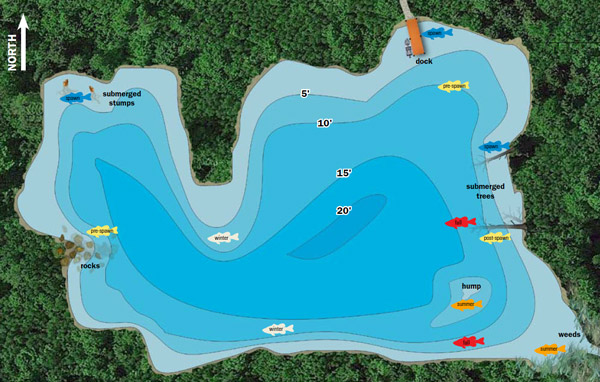How to Fly Fish for Bass

To fly fish for bass, select the right gear and master the casting technique. Understand bass behavior for best results.
Fly fishing for bass combines the thrill of the hunt with the grace of the cast, offering an exciting challenge for anglers. Perfecting this method involves choosing a suitable fly rod, usually within a 5-9 weight range, and acquiring flies that mimic the local forage.
A sturdy line and leader, coupled with a collection of streamers, poppers, and nymphs, will equip you for various bass behaviors and habitats. Key to success is the ability to read the water and adapt your approach to seasonal patterns and feeding habits. Bass are often found in warmer waters around cover, such as logs, rocks, and weeds, where they ambush prey. Developing a smooth, precise cast and learning how to present the fly in a lifelike manner will vastly increase your chances of catching these aggressive and powerful fish. As an accessible and rewarding sport, fly fishing for bass encourages continuous learning and offers abundant opportunities for outdoor enjoyment.
The Allure Of Bass: A Fly Fisher’s Dream
Fly fishing for bass is an experience unlike any other. Bass are known for their vigorous fights and unexpected jumps. Anglers often seek the thrill of hooking a bass on a fly rod. Reeling in a bass provides a unique challenge. Each bass battles in its own way, making every catch memorable. Their powerful strikes and strong pulls make the fight exhilarating.
Gear Up: Essential Fly Fishing Equipment
Selecting the right rod for bass fly fishing is a critical first step. A 7 to 9 weight rod offers versatile performance. Choose rods that handle the fight of a bass and provide accurate casting. For reels, a reel with a smooth drag system ensures that line is released seamlessly. Pair this with a sinking or sink-tip line to reach bass in deeper water. Match flies and lures to the bass’s diet. For example, crayfish imitations or topwater mice patterns attract hungry bass.
Bass Habits And Habitats
Bass are often found in waters with abundant vegetation and structures like logs. Warm water temperatures stimulate bass activity, making dawn and dusk prime fishing times.
Feeding patterns can dictate bass location. They often hunt near the water’s edge. As hunters, bass prefer clear waters where they can easily spot prey.
For successful fly fishing, a thorough understanding of these patterns is crucial. Identify waters with a mix of shade, shelter, and sustenance.

Credit: www.ginkandgasoline.com
Mastering The Cast: Techniques And Tips
Flying fishing for bass requires precise casting techniques. A good cast depends on proper stance, grip, and rod movement. Practice the basic overhead cast by aligning your body toward the target.
Keep your wrist firm and stop the rod at 10 and 2 o’clock positions. Sync your forearm and wrist motions for better control. Remember to pause and let the line straighten behind you before the forward cast.
| Technique | Purpose | Tip |
|---|---|---|
| Roll Cast | For tight spots with little room | Keep your elbow close to your body |
| Double Haul | To cast farther | Quickly pull line during the back cast |
Advanced casting methods can increase your reach and precision. Learn the sidearm cast to dodge underbrush. Double hauling boosts distance for open waters. Balanced timing is the secret of expert fly fishers.
On The Water: Strategies For Success
Understanding how water moves is key to finding bass. Observe the current and look for areas where bass might hide or hunt.
Bass behavior changes with the seasons. During spring, target shallow areas. In summer and fall, aim for deeper waters.
Bright sunlight can make bass seek shade. Choose your fishing times wisely, like early morning or late afternoon. Cloudy days can be perfect for fishing, as bass are less spooky and more active.

Credit: flylordsmag.com
Catch And Release Ethics
Fly fishing for bass is exciting but requires responsible practices. Proper handling of bass means wetting your hands before touching the fish. This protects their slime coat. Support the bass horizontally, avoiding its gill covers. Never squeeze the fish or touch its eyes.
Conservation and sustainability are key. Use barbless hooks for easy release. Keep the bass in water as much as possible. Revive the bass before release by moving it gently in water. This helps them breathe and regain strength.

Credit: www.onthewater.com
Frequently Asked Questions For How To Fly Fish For Bass
How Do You Fish For Bass On The Fly?
To fish for bass on the fly, select the right gear, including a sturdy rod, reel, and appropriate fly line. Choose flies that mimic local prey, like minnows or insects. Cast near structures where bass hide, and use varied retrieval patterns to entice bites.
What Is The Best Fly Fishing Setup For Bass?
The best fly fishing setup for bass includes a 6 to 8 weight rod, a matching reel, and a floating or sink-tip line. Use large, bright flies like poppers and streamers for optimal results.
What Size Fly Rod Do I Need For Bass Fishing?
A 7-9 foot fly rod with a 6 to 8 weight rating is ideal for bass fishing, offering optimal casting power and precision.
Which Flies To Use For Bass?
For bass fishing, top fly choices include poppers, streamers, and woolly buggers. Clouser Minnows and crayfish patterns are also effective for enticing bass. Select flies that match local prey and water conditions for best results.
Conclusion
Mastering the art of fly fishing for bass can transform your angling experiences. With the right techniques and gear, you’ll savor the thrill of each catch. Remember, practice breeds precision—keep honing those skills. Embrace the journey as each cast brings you closer to becoming a fly fishing aficionado.
Tight lines!




